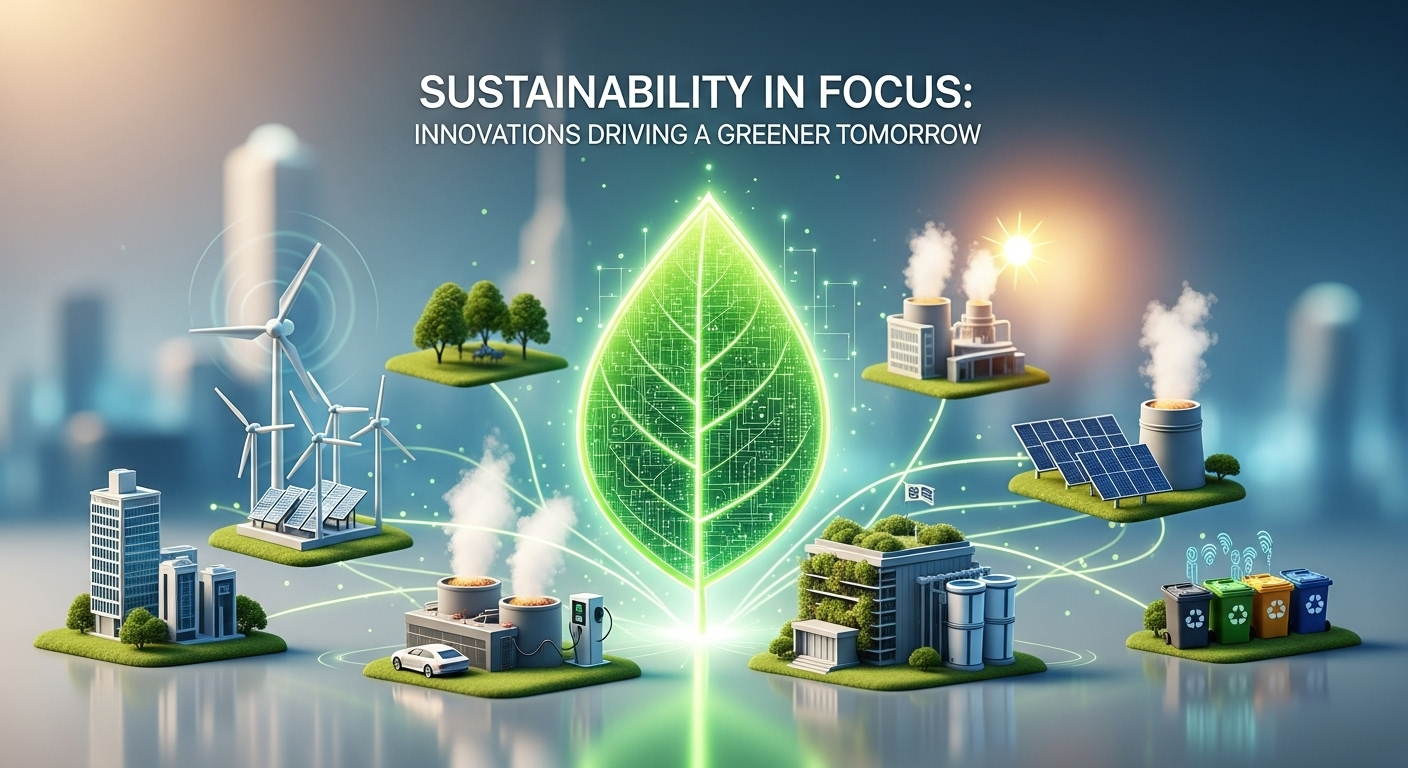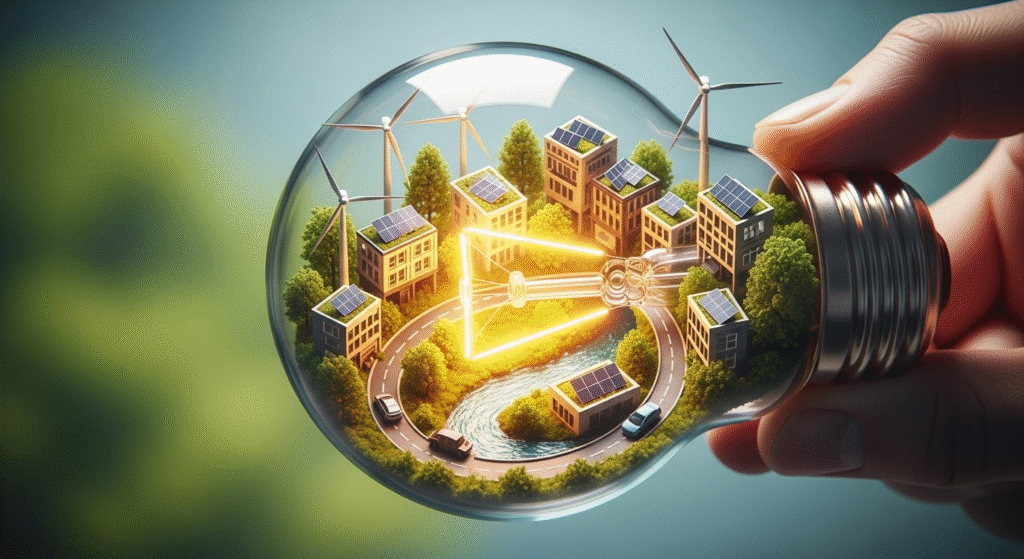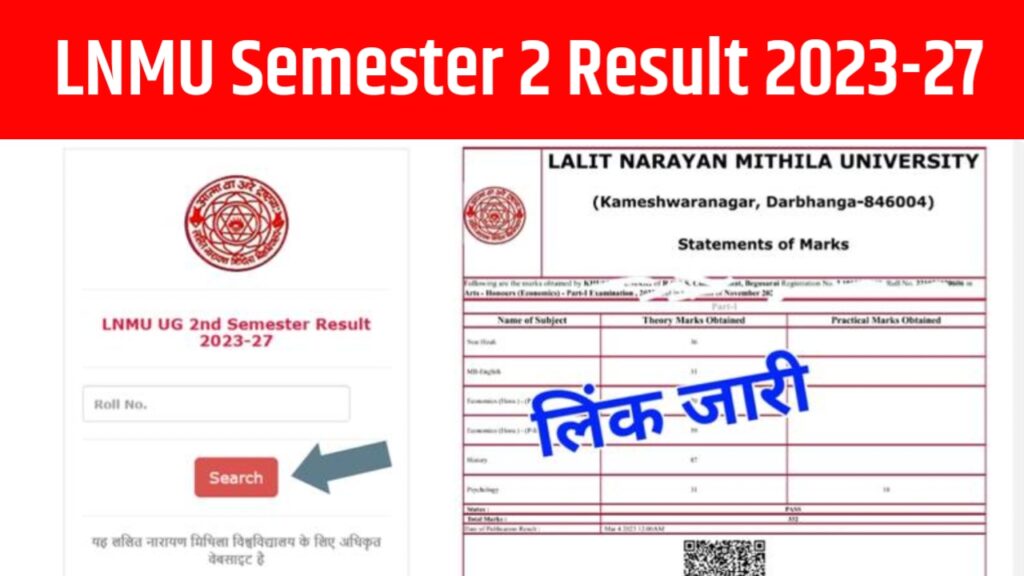Okay, let’s be honest. When someone says “sustainability,” does your brain immediately conjure up images of hemp clothing and composting bins? Mine used to. And while there’s absolutely nothing wrong with either of those things (I actually quite admire a good compost heap!), the truth is, the world of sustainability is exploding with innovation. I’m talking about stuff that goes way beyond the stereotypes.
I initially thought this whole “greener tomorrow” thing was just a marketing buzzword, but after digging in, I’ve got to admit, some of the breakthroughs are genuinely mind-blowing. It’s not just about reducing your carbon footprint anymore; it’s about completely reimagining how we do things. And that, my friends, is where it gets really exciting.
But before we dive into the shiny new tech, let’s take a step back. What is sustainability, really? I mean, besides the textbook definition? Think of it as building a world that can thrive indefinitely. A world where resources aren’t depleted, ecosystems are healthy, and future generations aren’t stuck cleaning up our mess. Simple, right? Not always. The frustrating thing about this topic is that it requires a delicate balance between economic growth, social equity, and environmental protection. And finding that sweet spot? That’s the challenge.
The Rise of Circular Economy

So, how do we achieve this balance? Well, one of the most promising solutions is the concept of a circular economy. Now, you might be wondering, what exactly is a circular economy? Instead of the traditional “take-make-dispose” model, a circular economy aims to minimize waste and maximize resource use. Puzzle GamesThink about it this way: products are designed to be durable, repairable, and eventually recyclable. It’s like nature’s own system, where everything is reused and nothing goes to waste. According to the EPA circular economy seeks to rebuild capital, whether it is financial, manufactured, human, social or natural.
For instance, companies are now exploring bio-based plastics made from renewable resources like cornstarch or sugarcane. Imagine packaging that actually breaks down naturally, instead of ending up in a landfill for centuries. Pretty cool, huh?
And it’s not just about materials. Businesses are also adopting circular business models, such as product-as-a-service. Instead of buying a product outright, you lease it, and the company remains responsible for its maintenance, repair, and eventual recycling. This incentivizes manufacturers to design products that are built to last, and it reduces the need for constant consumption. Think about it – less waste, more value.
Energy Innovations and a Greener Tomorrow
Speaking of less waste, energy production is another area ripe for innovation. We all know about solar and wind power, but there’s so much more happening behind the scenes. For example, there’s growing research into advanced geothermal systems that can tap into the Earth’s heat with greater efficiency and in more locations. Then you have developments in battery technology, crucial for storing renewable energy and powering electric vehicles (EVs). We’re not just talking about slightly better batteries, either. Some researchers are experimenting with solid-state batteries, which promise higher energy density, faster charging times, and improved safety.
And what about the energy we already use? Buildings are huge energy consumers, but new technologies are making them smarter and more efficient. From smart thermostats that learn your habits to dynamic glass that adjusts to sunlight, there are countless ways to reduce energy consumption in buildings.
But actually, that’s not quite right. It’s not just about reducing consumption; it’s about creating buildings that actually generate energy. Imagine buildings covered in solar panels, capturing rainwater for reuse, and even producing their own food through vertical farming. Sounds like something out of a sci-fi movie, right? Well, it’s already happening.
Sustainable Transportation and the Future
Now, let’s talk transportation. Cars, trucks, planes – they’re all major contributors to greenhouse gas emissions. Electric vehicles are gaining traction, but they’re not the only solution. Sustainable aviation fuels, made from biomass or captured carbon dioxide, are showing promise for reducing emissions from air travel. And for shorter distances, bike-sharing programs and electric scooters are becoming increasingly popular. I wanted to see the answer key for it but seems like it will be out soon.
I keep coming back to this point because it’s crucial: sustainable transportation is not just about switching to electric vehicles. It’s about creating a multimodal transportation system that prioritizes walking, cycling, and public transit. It’s about designing cities that are more walkable, bikeable, and transit-friendly. And that requires a shift in our mindset, from prioritizing individual car ownership to prioritizing sustainable mobility for all.
And speaking of cities, what if our roads could repair themselves? Self-healing concrete, embedded with bacteria that produce calcium carbonate to fill cracks, is an intriguing innovation that could significantly extend the lifespan of infrastructure. It’s like giving our roads a built-in regenerative ability.
Embracing Sustainable Agriculture
Wait, there’s something even more interesting here… What about agriculture? Food production is a major driver of deforestation, water pollution, and greenhouse gas emissions. But sustainable agriculture practices can help mitigate these impacts. From regenerative agriculture, which focuses on restoring soil health and biodiversity, to vertical farming, which allows us to grow crops in urban areas, there are countless ways to make our food system more sustainable. Think about it this way: we can feed more people with less land, less water, and less pollution.
Actually, vertical farming fascinates me. These indoor farms use hydroponics or aeroponics to grow crops in stacked layers, maximizing space and minimizing water use. They can be located in urban areas, reducing transportation costs and ensuring access to fresh produce for city dwellers. Plus, they can be grown year-round, regardless of the weather. It’s like having a farm in your backyard, without the mess and the hard work.
But it’s not just about technology. Traditional farming practices, like crop rotation and cover cropping, can also play a significant role in promoting soil health and reducing the need for synthetic fertilizers and pesticides. Sometimes, the best solutions are the ones that have been around for centuries.
FAQ: Sustainability in Focus
How do I know if a product is truly sustainable?
That’s a great question, and it’s one that many consumers struggle with. The truth is, “sustainable” can be a tricky term, as it’s often used for greenwashing. Look for credible certifications, such as Fair Trade, Organic, or Cradle to Cradle. Also, consider the entire life cycle of the product, from its raw materials to its disposal. Is it made from recycled materials? Is it durable and repairable? Can it be easily recycled or composted at the end of its life? If you don’t find the answer to these questions, you can find more info at here. Remember, sustainability is not just about the product itself, but also about the company’s social and environmental practices.
Why is sustainability so important, anyway?
Well, think about it this way: we only have one planet. And if we continue to consume resources at the current rate, we’re going to run out. Sustainability is about ensuring that future generations have access to the same resources and opportunities that we do. It’s about creating a world that is both environmentally sound and socially just. It’s not just about saving the planet; it’s about saving ourselves.
What’s one simple thing I can do to be more sustainable in my daily life?
There are tons of things you can do, but one of the easiest and most impactful is to reduce your food waste. Did you know that about one-third of all food produced globally is wasted? That’s a huge amount of wasted resources, from water and energy to land and labor. By planning your meals, storing food properly, and composting food scraps, you can significantly reduce your environmental footprint. And you’ll save money too!
Isn’t Sustainability in Focus just a trend? Will it fade away?
While trends come and go, the need for sustainability is only growing stronger. Climate change, resource depletion, and social inequality are all pressing issues that demand our attention. Sustainability is not just a trend; it’s a fundamental shift in the way we think about our relationship with the planet and with each other. It’s about creating a more resilient, equitable, and prosperous future for all. So, no, it’s not going away anytime soon.
The innovations driving a greener tomorrow are not just technological marvels; they represent a fundamental shift in our values and priorities. It’s about recognizing that our actions have consequences, and that we have a responsibility to create a more sustainable world for future generations. And that, my friends, is something worth getting excited about. It’s an attitude that has to be embraced by the people.



